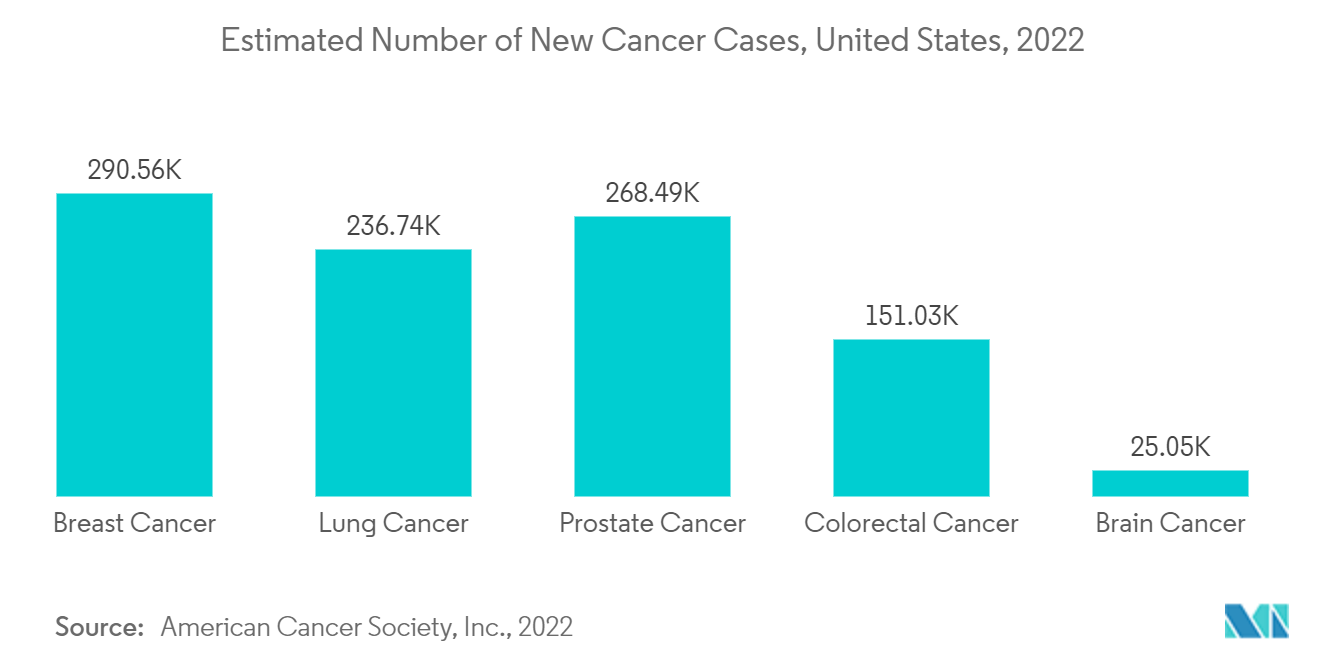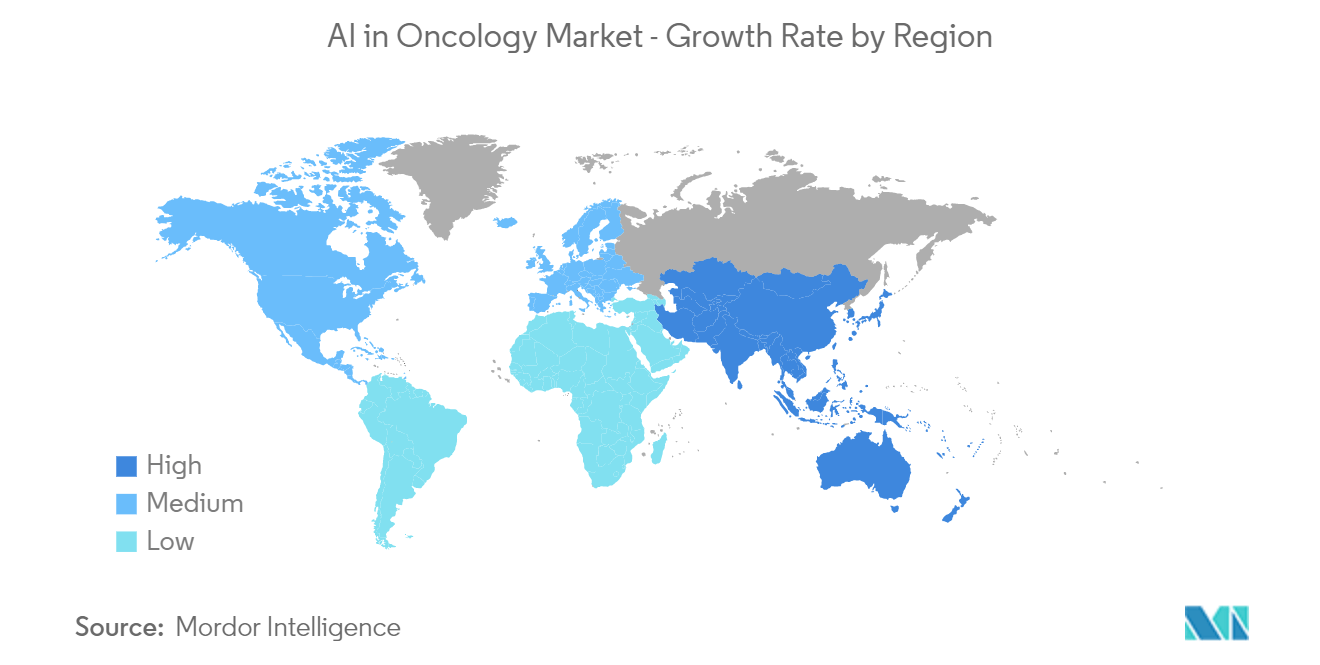Market Trends of AI in Oncology Industry
This section covers the major market trends shaping the Artificial Intelligence in Oncology Market according to our research experts:
Chemotherapy Segment is Expected to Have a Highest Growth Rate in the Forecast Period
The chemotherapy-based treatment utilizes drug molecules that destroy fast-moving cancer cells. The integration of AI in chemotherapy treatment assists healthcare professionals in the development of a personalized digital profile of the patients, through which their dose can be tailored during the treatment. The increase in research activities for incorporating AI in chemotherapy further accelerates segment growth. For instance, in June 2022, the National University of Singapore (NUS) announced the development of the CURATE.AI solution, which utilizes various clinical data, such as the dosage of the drug, medications, and presence of biomarkers, to customize the digital profile of the patient that provides personalized chemotherapy dosage recommendations resulting in the improvements in cancer patient outcomes. Hence, owing to the advantages offered by the incorporation of AI in chemotherapy, such as tailoring of chemotherapy dosages resulting in fewer side effects, prediction of cancer recurrence by using AI models, and high accuracy, the adoption of these products is likely to increase among the target population, ultimately driving the market growth.
In addition, AI models are being employed to predict chemotherapy responses and cancer prognosis, driving the segment's growth. For instance, in September 2022, a study was presented at the European Society for Medical Oncology (ESMO) Congress 2022, highlighting the likelihood of cisplatin-based neoadjuvant chemotherapy response in muscle-invasive bladder cancer (MIBC), which resulted in the reduction of treatment-related morbidity and optimization of cancer treatment outcomes. Hence, the adoption of AI models for the prediction and prognosis of cancer is driving segment growth.

North America is Expected to Dominate the AI in Oncology Market
North America is expected to dominate the market owing to factors such as the presence of digital infrastructure and favorable governmental and reimbursement regulations. For instance, as per the article published in Elsevier in September 2022, AI reduces MRI scanning time, resulting in cost reduction and time-saving, thus, higher patient outcomes. In the United States, the government provides direct reimbursement policies to democratize healthcare access to the country to improve overall health outcomes. Thus, an increase in government reimbursements in the United States is among the key factors contributing to the growth of the market studied in North America.
The adoption of AI in oncology has reduced overall cancer treatment costs without affecting the quality of care, which is burgeoning its demand in the region. For instance, as per the study conducted by the American Society of Clinical Oncology, there were approximately 5% reductions in treatment costs for medical oncology in the United States in 2022. Thus, there is a surge in the adoption of AI in oncology in the region, which is intensifying regional growth.
Key product launches, the high concentration of market players, and strategic collaborations amongst key players in the United States are some of the factors driving AI's growth in the country's oncology market. For instance, in November 2021, Sanofi-Aventis U.S. LLC. announced a strategic investment of USD 180 million with the U.S.-based AI precision medicine company Owkin, Inc. for the advancement of its oncology pipeline. This collaboration will help Sanofi's expanding oncology portfolio in key areas like lung cancer, breast cancer, and multiple myeloma to optimize clinical trial design and detect predictive biomarkers for illnesses and treatment outcomes with the aid of AI. These continuous strategic collaborations in the region are anticipated to drive the growth of the market in the country.
Therefore, owing to the aforesaid factors, the growth of the studied market is anticipated in the North America Region.


